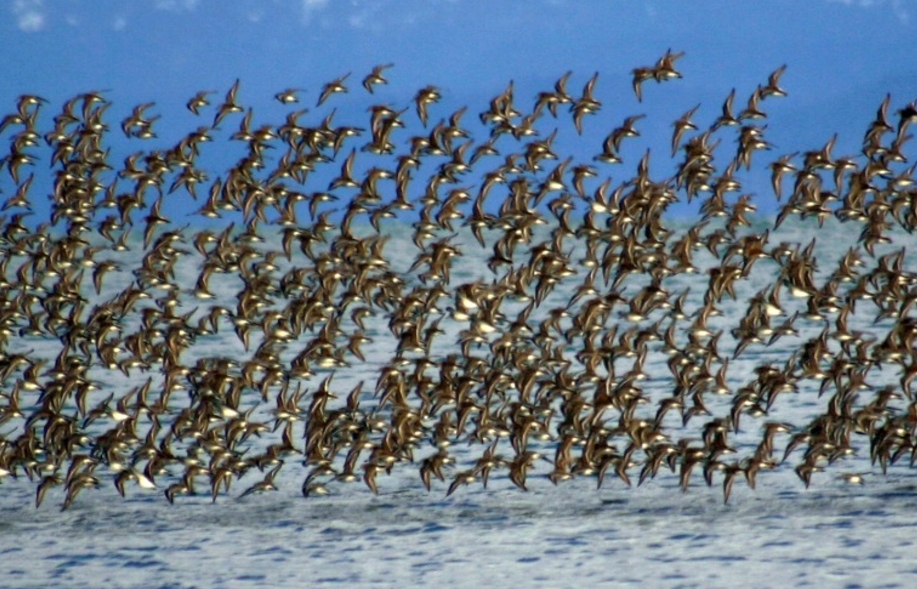
(Homer) — The designation is official and just in time for this year’s annual Kachemak Bay Shorebird Festival: The estuaries, shores, sloughs and tidal areas of Kachemak Bay are now officially part of the prestigious Western Hemisphere Shorebird Reserve Network (WHSRN).
WHSRN is a government-private partnership that designates important areas for shorebirds as a way to raise public awareness and promote scientific and conservation measures. Kachemak Bay now joins more than 90 network sites located in 14 countries throughout North and South America, including four other locations in Alaska.
Portions of Kachemak Bay—including Fox River Flats, Mud Bay and Mariner Park Lagoon—were named WHSRN sites in 1994. But as more information became available through monitoring and field studies, it became clear that Kachemak Bay in its entirety plays an import ecological role for shorebirds whose habitats span the Western Hemisphere. The new designation encompasses Kachemak Bay in its entirety, including both the inner and outer bay areas.
Kachemak Bay’s designation within WHSRN was made possible through the cooperative efforts of the City of Homer, the Kachemak Bay Birders, the U.S. Fish and Wildlife Service, the Kachemak Bay community, and the Alaska Department of Fish and Game. An official signing ceremony is scheduled for Saturday in Homer as part of the Kachemak Bay Shorebird Festival.[xyz-ihs snippet=”adsense-body-ad”]
Nearly 40 shorebird species have been observed in Kachemak Bay with many staging by the thousands during the spring migration. Other WHSRN sites in Alaska include the Copper River Delta, Kvichak Bay, Nushagak Bay, and the Yukon Delta.
Kachemak Bay’s nomination and implementation into the WHSRN comes at no cost for the state. No regulatory or other enforceable requirements or oversight are associated with this designation.
For more information on the WHSRN program, visit https://www.whsrn.org/about-whsrn .
Source: ADF&G [xyz-ihs snippet=”Adversal-468×60″]







